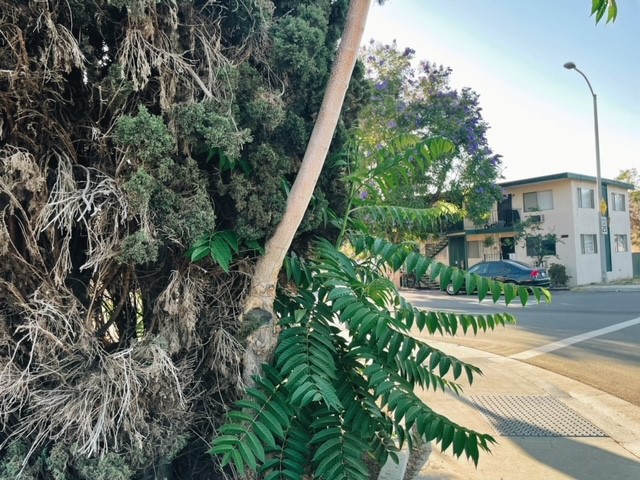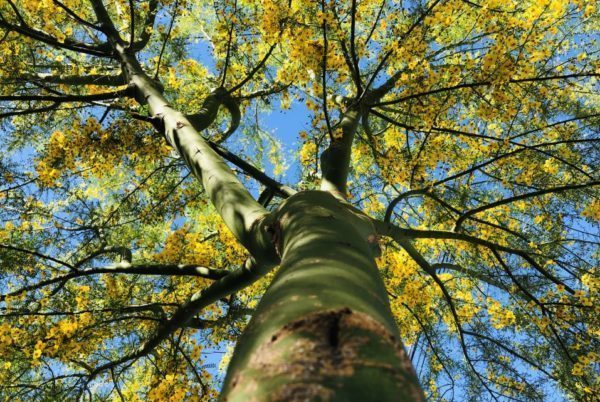

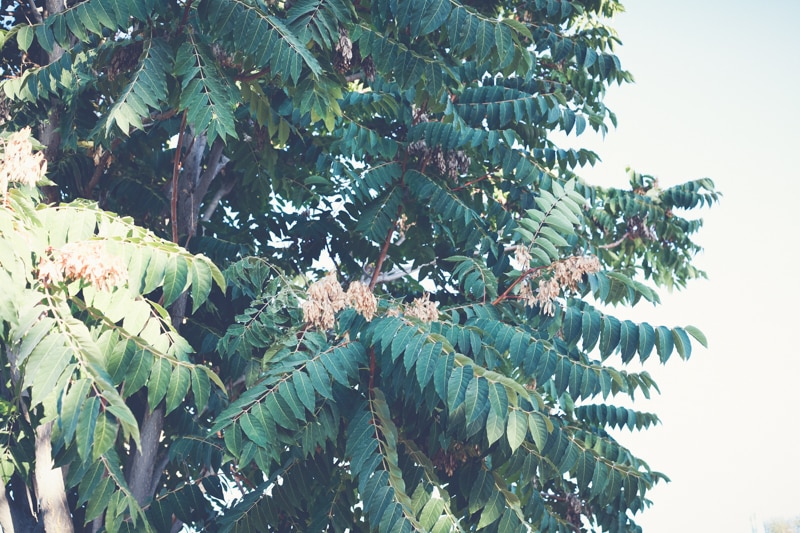
When the warmer seasons roll around in sunny San Diego, cute baby squirrels lightly prance around the parks after their mama, while a flock of little waddling ducklings stop pedestrians in their tracks. It’s that perfect time of the year for babies to pop up everywhere—even baby trees!
Some people love the idea of tree seedlings springing up around the property. It’s especially desireable in forests and wildlands where lush greenery is ideal. However, in a residential or commercial property where all, or most, of the plant life is meticulously mapped and planned out, having a random tree or better yet—a group of trees—pop out of the ground can be more of a nuisance!
Out of all the wonderful trees that we have here in San Diego, a handful can be quite a pain when it comes to their ability to spread like wildfire. So we’ve compiled a short list of three trees to watch out for because if left unmanaged—they will take over your property. These trees are considered to be invasive plant. This means means that they are non-native plants, fast-growers, and are great at spreading through any given area. We call these trees our super spreaders!
1
Mexican Fan Palm
Washingtonia robusta
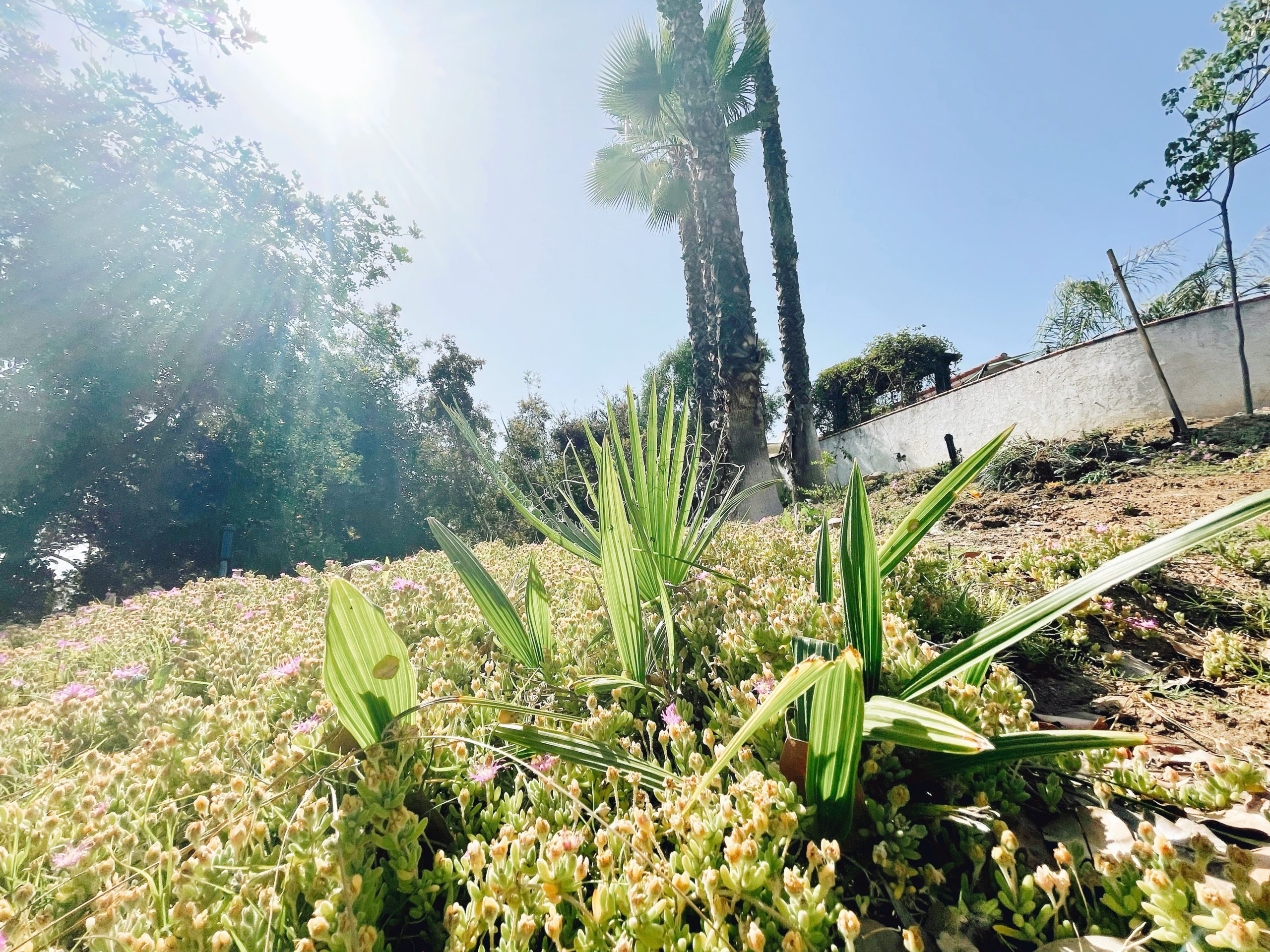
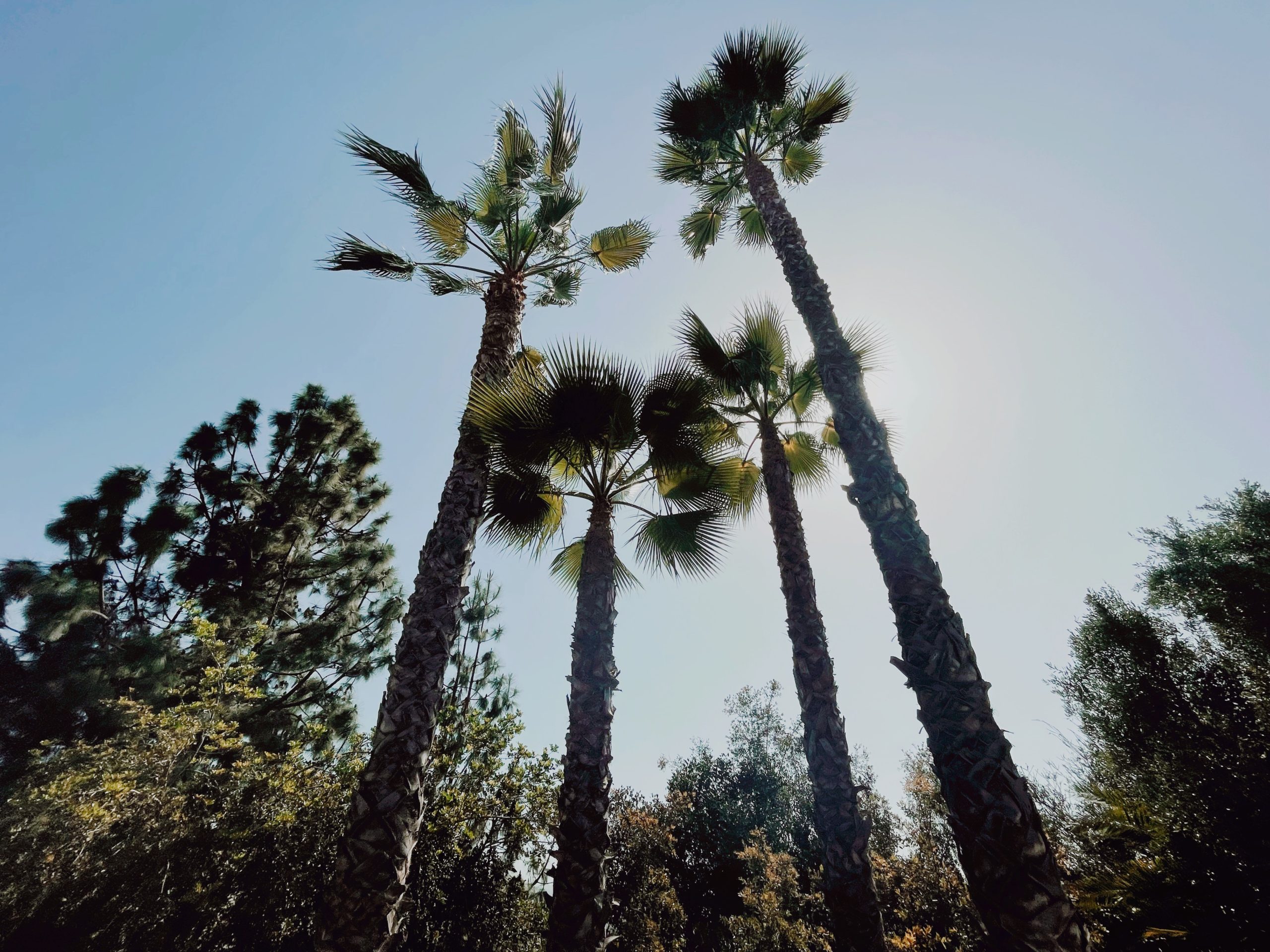
There isn’t another “tree” on our list of San Diego’s Super-Spreader Trees that is as reknown in California as the Mexican fan palm. They are ever-present in our picturesque beaches and symbolize the Southern California lifestyle.
There’s a reason why the Mexican fan palm, or Washingtonia robusta, proliferates our region in high numbers. Even its scientific name give us a clue. The root meaning of robusta is strong. Fitting—as the Mexican fan palm is one sturdy and resilient plant! It’s able to not just survive, but thrive, in conditions that are deemed unfavorable for most other trees. In fact, some of them never even receive supplemental water. Amazingly, they can still grow to heights of more than 100 feet—relying on San Diego’s measly 12 inches of annual rainfall or by finding a source of nearby groundwater.
How do they spread?
Of all the palms in San Diego, the Mexican fan palm is the most prolific and problematic when it comes to unwanted seedlings. While these palms are very low maintenance in the watering and nutrition department—they are high-maintenance when it comes to pruning. Unlike some of their self-pruning palm counterparts, such as the king palm and queen palm, Mexican fan palms must be trimmed annually to avoid an unsightly dead frond skirt. In addition, in order to avoid ground mess, they must also have their seedpods removed on a regular basis.
Within a 30-ft circumference of a group of mature Mexican fan palms were found over 100 palm seedlings that look like blades of grass.
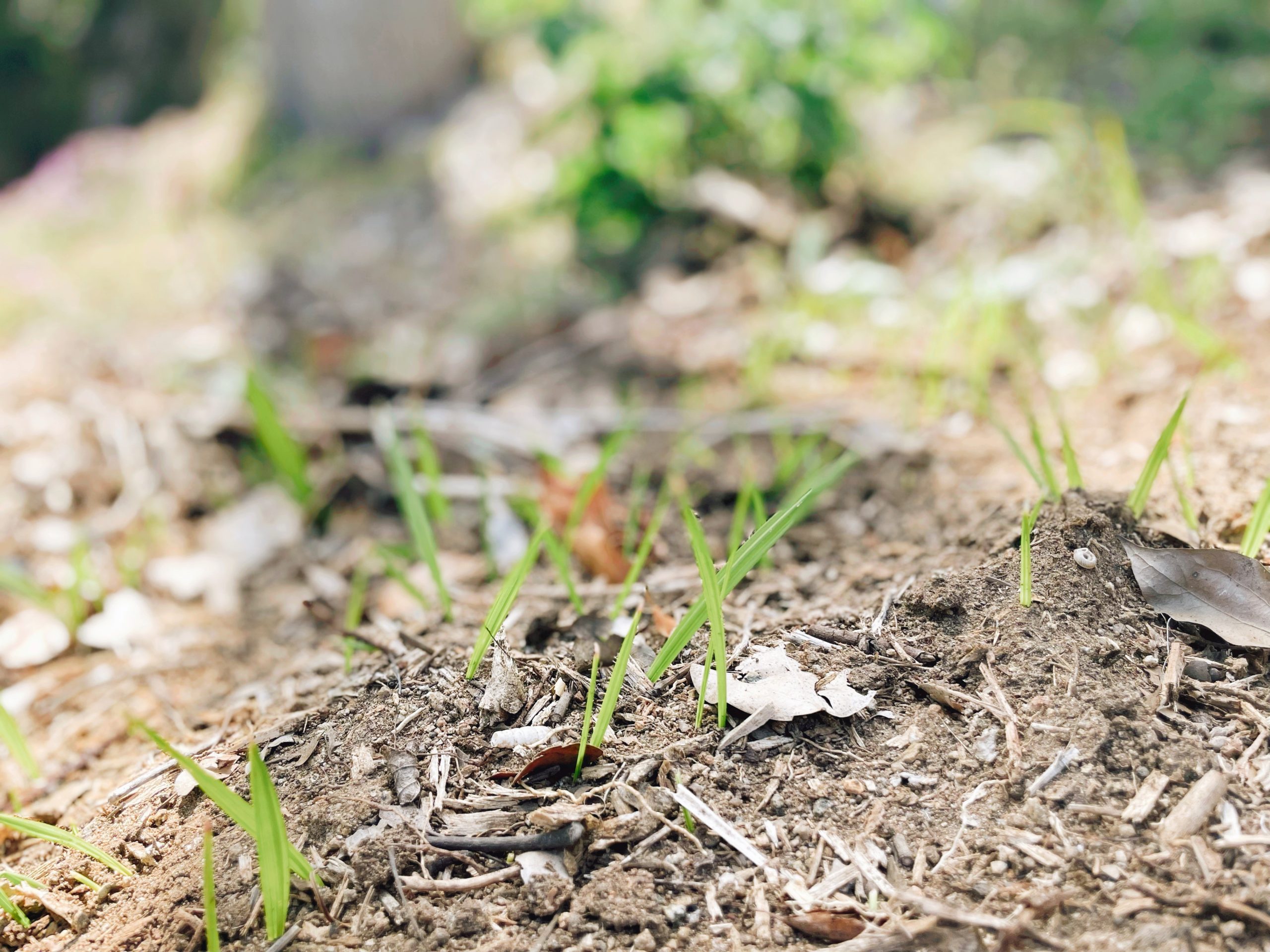
If their annual pruning is delayed or neglected, in the spring, you will all of a sudden notice an array of what looks like blades of grass growing in the ground surrounding the palm. Technically, they actually are grass since palms are monocots, just like grass. As single-blade seedlings, they are extremely easy to pull from the ground. So don’t delay—because given time, these little blades will grow into mini palms, which will take more effort to extract, depending on their size.
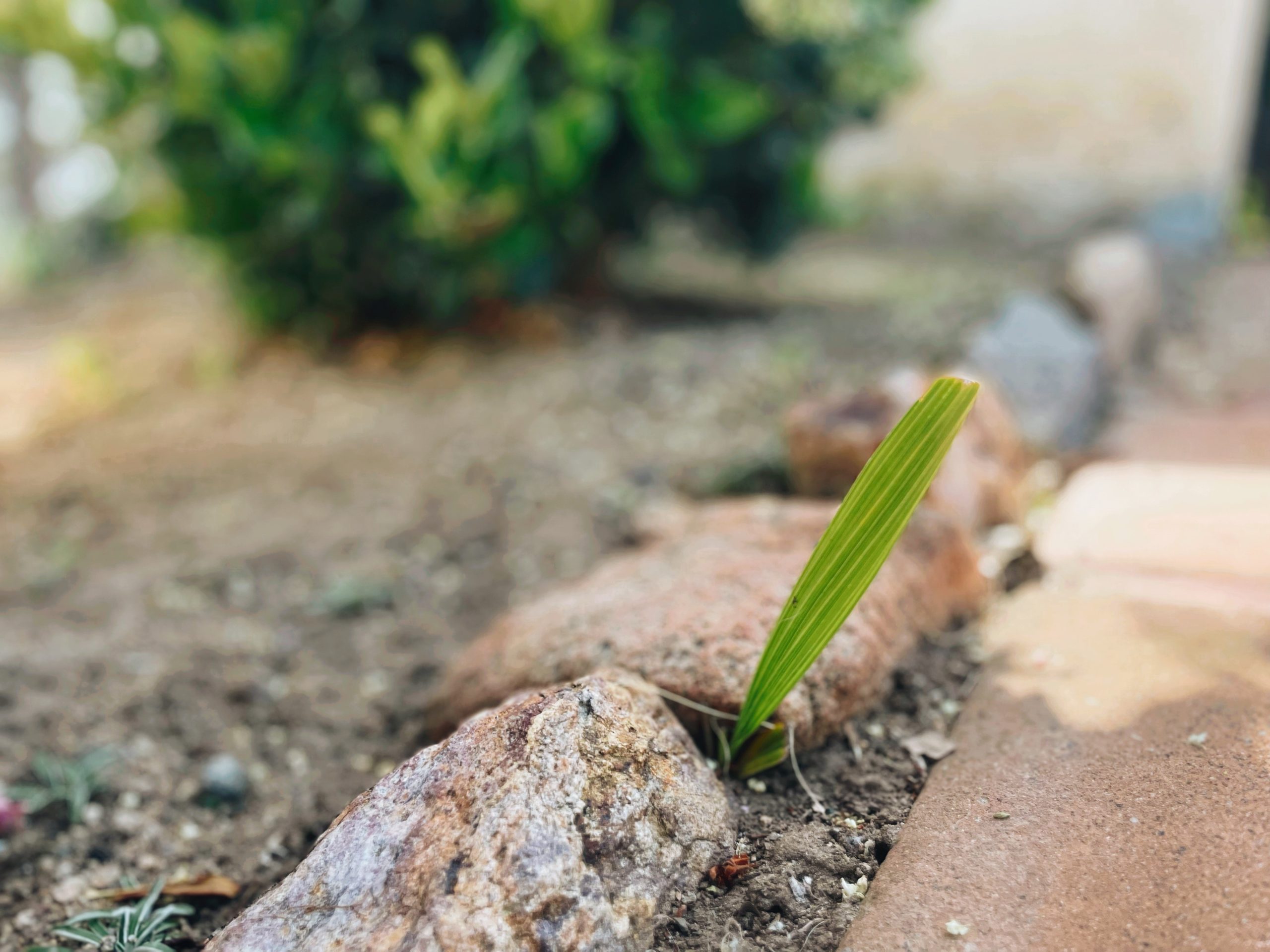
Just like weeds, the Mexican fan palm seedlings can grow just about anywhere. This is a lone seedling that was found growing about 30 feet away from the “mama” palm in between ornamental rocks, away from any watering system.
What should you do if you have Mexican fan palms?
These palms are a favorite ornamental palm throughout San Diego. They are low-maintenance, fast-growing—and if regulary trimmed, they are a great addition to your landscape. So if you have any Mexican fan palms on your property, then we highly recommend maintaining a yearly pruning schedule. The ideal time is in the spring or summer when the seedpods are present—but before they open and start dropping seeds.
2
Palo Verde Tree
Parkinsonia florida, Parkinsonia microphylla, Cerdium ‘Desert Museum’
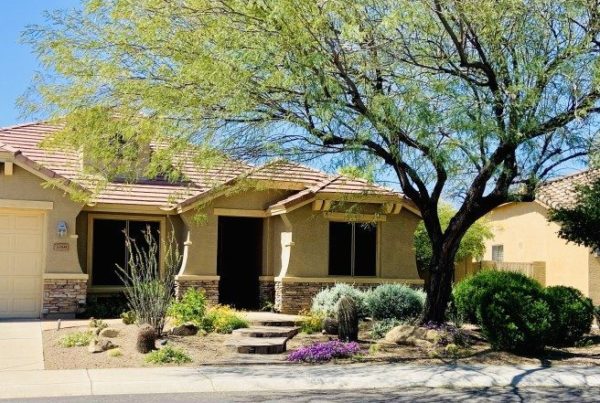
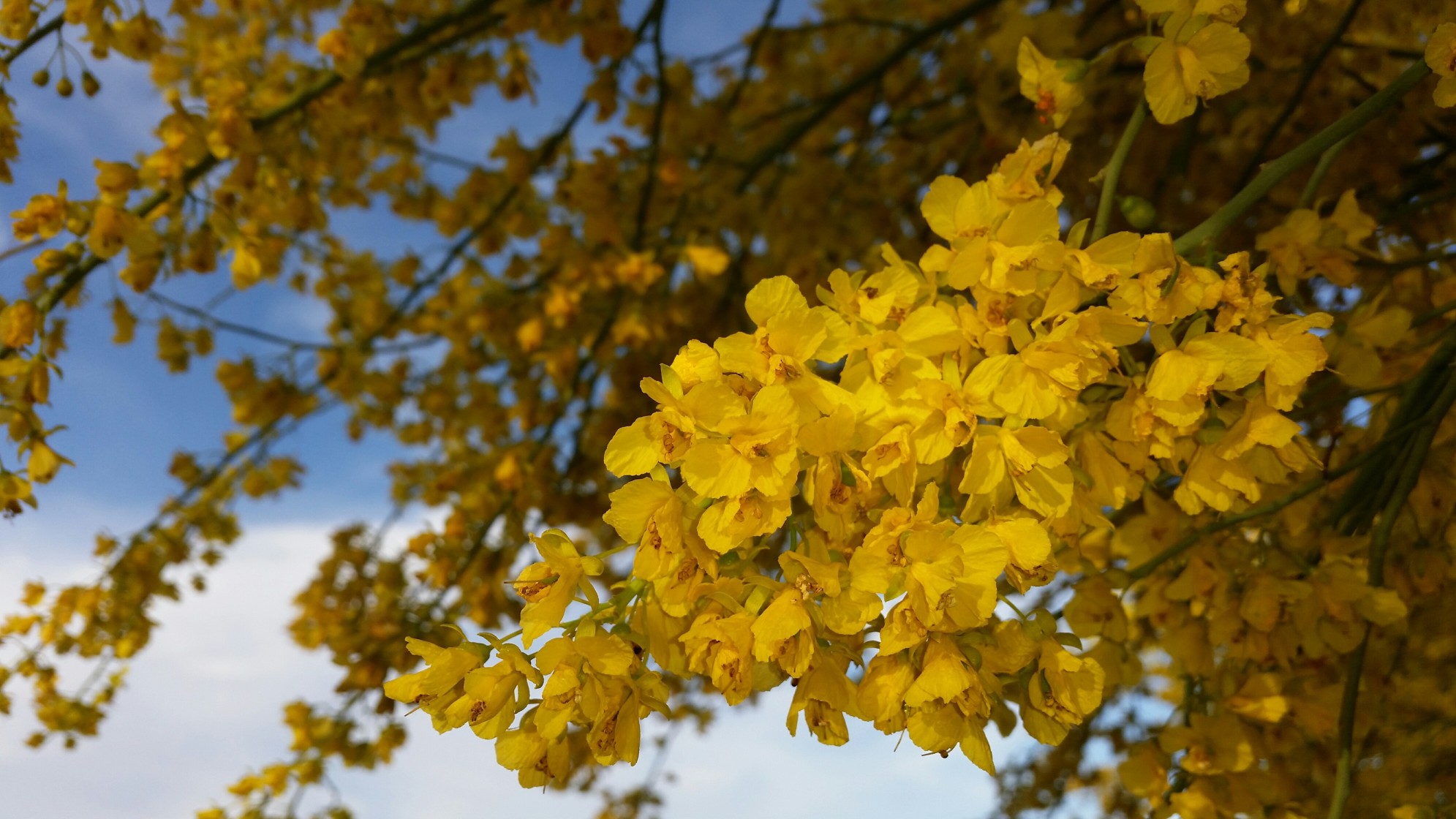
It’s a unique tree, and it’s a gorgeous tree when in bloom. In fact, compared to other deciduous flowering trees, it doesn’t even look too shabby when its limbs are bare in the winter. The palo verde tree is a desert tree that thrives in San Diego’s semi-arid climate. What makes this tree different from others is that it possesses green limbs and a green trunk when it’s young. It’s a beautiful ornamental tree and an admirable addition—if you’re willing to deal with its mess and reproductive zeal.
Many people are drawn to the palo verde when they see it decorating a residential or commercial property. So they go transplant one to their property. But then a couple of years later, after the tree has had its first blooms and seed fall, all of a sudden (especially after rainfall) hundreds of little two-leaf seedlings start to sprout under the tree’s canopy, around the canopy, and even a distance away from the canopy where you had no idea any seeds had even fallen.

With a palo verde tree on your property, you are bound to find hundreds of these little seedlings throughout the year. Within two minutes, 5 of these seedlings were pulled.

How do they spread?
The palo verde is a prolific super-spreader. In the spring and summer, its entire canopy is gorgeously arrayed in yellow flowers. Birds and bees, especially capenter bees, love it! But then after the dazzling flower display come the legion of lightweight seedpods—which are easily blown throughout the property and to neighboring properties, as well. These seeds wait, ready to germinate, with even the slightest amount of water. It doesn’t take much—light precipitation, morning dew, an accidental sprinkle from a garden hose. Remember, this is a desert tree.

Even with weed prevention fabric and 2 inches of mulch on top, this palo verde still managed to quickly grow from a tiny 1-inch seedling to almost 12 inches in just 2 weeks.
What should you do if you have a palo verde tree?
Unlike the Mexican fan palm, whose seeds you can easily trim off before they cause any issues, you can’t stop the dispersion of the palo verde’s seedpods. You can, however, keep their germination numbers low with routine cleanings—not on the tree itself, but on the surrounding soil.
As long as the seedpods are removed from the area on a regular basis, they shouldn’t pose too much of a problem. If the tree is surrounded largely by hardscape and has a limited area of exposed dirt, then even better. On the contrary, if the tree is surrounded by a substantial area of uncovered dirt, then thorough cleanups are required in order to control their numbers because these trees rain down thousands of seeds! And if any seeds get left behind, you can almost guarantee that it’ll sprout into a baby tree if given the chance. It’s not uncommon to see a property that started off with just one palo verde tree, but in just a few years, possessed a group of palos that all stemmed from that one lone tree.
3
Tree of Heaven
Ailanthus altissima
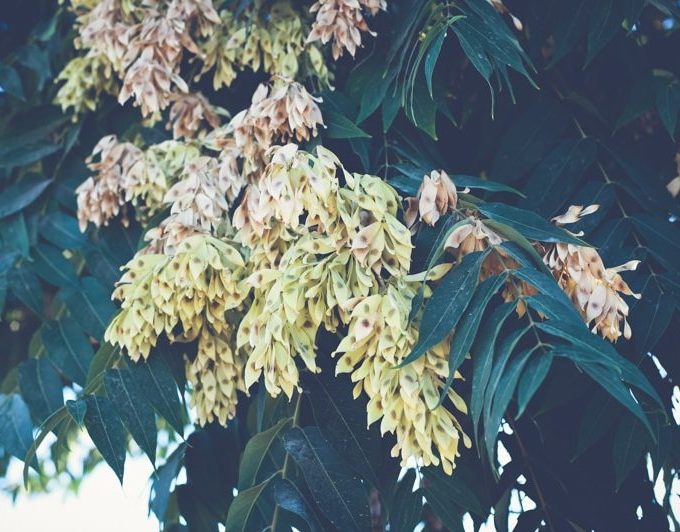
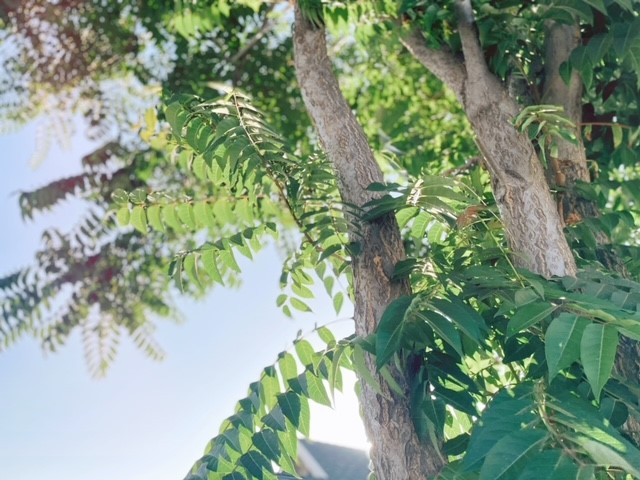
The tree-of-heaven is perhaps the most annoying tree in San Diego. Surprisingly, it is a common sight in some local neighborhoods, where multiple homes on the same street will have it in their front yard. However, good luck trying to find this tree in any of our local nurseries! For people in the arboriculture or horticulture industry, this is a tree that you want to “kick off” your property, not invite in. This is because the tree-of-heaven, in our opinion, is the most invasive tree in San Diego.

Tree-of-heaven trees were made to be super-spreaders through the use of their lightweight winged seedpods (left).
Due to their prolific nature, it is common to find groups of this invasive tree in residential and commercial properties (right).
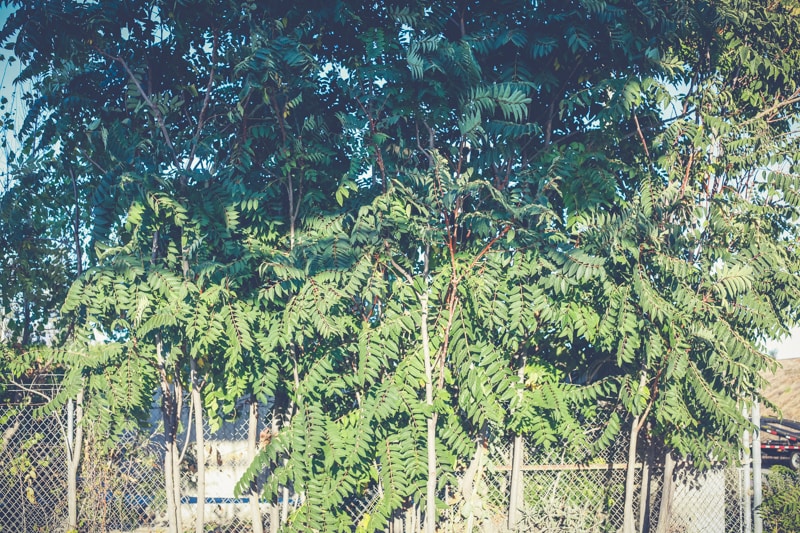
How do they spread?
The tree-of-heaven was made for super-spreader fame! It uses, not just one method to reproduce—but two highly effective measures.
First, just as with most other plants and trees, this super-spreader develops lightweight, winged seedpods, called samara, that are easily dispersible in the wind. In fact, a large tree-of-heaven has the capability of releasing over 300,000 seeds every year. With their brilliant design, these samara are able to cover a fairly large range.
But even without the dispersion of seeds, the tree-of-heaven would still have no problem with proliferating an area. While its winged seedpods are doing their job flying with the breeze, underground is a whole different story. The tree-of-heaven has such a robust root system that shoots out lateral roots, which grow horizontally underground and sprout new trees. This is why clusters of tree-of-heavens are commonly found in straight lines.
What should you do if you have a tree-of-heaven?
If you have a mature tree-of-heaven currently on your property, remove it!
If you have a young tree-of-heaven on your property, remove it immediately!
Postponing its removal or opting to keep it, will only result in frustration for you and for your neighbors. Even though it has such an angelic name, it’s not! It’s actually quite devilish! So if you notice a seedling or sapling, pull or dig it out immediately!
If the tree is allowed to grow, the process to remove it will be more difficult than it is with your typical tree. Actually, it’s nightmarish. And this is due to two main reasons:
- Since the tree-of-heaven tends to grow in random spots, such as pressed up against a structure or fence, using a cut-and-drop technique typically cannot be performed. In cases where a tree isn’t able to be cut at the base of the trunk, then tree trimmers have to climb into the canopy to cut one limb at a time. However, tree-of-heavens have brittle and skinny limbs, making it more dangerous and challenging to cut down—thus increasing the cost.
- The tree-of-heaven has one of the most resilient root systems out of all of our local trees. For most trees, a complete removal can be accomplished with a removal and stump grinding procedure. The tree is gone, as well as the hub of the root system. Therefore, any remaining roots that weren’t ground down will die off as well. With the tree-of-heaven, however, it’s a different story. If the tree were removed and the stump and nearby roots were pulverized, any distant roots that were missed carry on, as if nothing even happened. So before a tree-of-heaven can be removed, unfortunately, poison must be administered to kill the tree and its entire root system. Otherwise, if any live roots are left underground, it is only a short matter of time before it sprouts a new tree. This tree also has an amazing survival reaction to cuts. If a chainsaw is used on the tree first, then the roots actually shut down temporarily and stop absorption. Consequently, if poison is then applied after the removal, it would be futile because the roots wouldn’t even absorb it. Then once the coast is clear, the activate back up and continue growing.
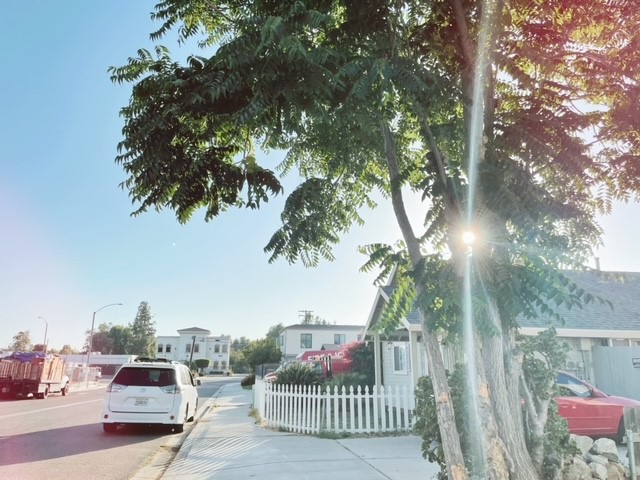
If left alone, the tree-of-heaven will spread throughout an entire neighborhood. These trees are part of a family of tree-of-heavens that populated an entire section of Lakeside.
